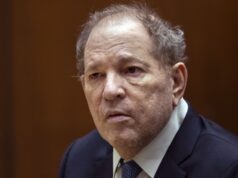
There have been 220,000 unsolved murders in the U.S. since 1980. Are serial killers to blame? Here’s everything you need to know:How many serial killers are there? Since 1900, there have been 3,000 identified American serial killers who’ve collectively killed nearly 10,000 people, says Dr. Michael Aamodt, who oversees the Radford University/Florida Gulf Coast University Serial Killer Database. The FBI defines a serial killer as someone who kills two or more people in separate events. About 32 percent of these killers, Aamodt says, did so for enjoyment (thrills, lust, and power); 30 percent for financial reward; 18 percent in anger; 6.3 percent to advance a criminal enterprise; and fewer than 1 percent because a cult put them up to it. Their favorite murder weapon was a gun (42 percent), although 6 percent preferred poison and 2 percent axes. About 52 percent were white, 40 percent black, and 6.7 percent Hispanic. Men outnumber women by a factor of 10. Samuel Little, a transient former boxer and career criminal serving time for two murders, was recently identified by the FBI as the most prolific serial killer in U.S. history, after he confessed to 93 killings between 1970 and 2005.What makes a serial killer? Probably a combination of genetics and experience. Research shows that certain genes can predispose people to violence. (One gene, particularly, the so-called warrior gene, is present in about 30 percent of the population and has been linked to increased aggression.) Many serial killers also experienced childhood trauma or early separation from their mothers. As a consequence of that trauma or separation, scientists believe, they learned to suppress empathy or suffered damage to the areas of the brain that control emotional impulses. Serial killers often are loners who fear all relationships and seek to control, to destroy other people to eliminate the possibility of another humiliating rejection. Prolific arsonist Robert Dale Segee, who is believed to have killed 168 and injured hundreds more by setting a fire at a Connecticut circus in 1944, grew up with a dad who punished him by holding his fingers over a candle flame. Jeffrey Dahmer, who killed, dismembered, and partially ate 17 boys and young men beginning in 1978, said he did so “not because I hated them, but to keep them with me.” Gerald Stano, who killed at least 22 women beginning in the 1970s, compared killing people to “stepping on a cockroach.” Little said he got sexual pleasure from strangling women with his bare hands, and that by taking their lives, he came to “own” them.What role does society play? The teeming, impersonal nature of the modern world is fertile soil for creating serial killers, experts say. Five hundred years ago, the average citizen lived in a small community, traveled rarely if at all, and might have come into contact with 100 “strangers” over the course of his lifetime. By comparison, modern urban dwellers live amid “a sea of strangers,” providing the consistent, impersonal interactions and anonymity that are almost preconditions for serial killing. Those who’ve studied serial killers believe that many are at least partly motivated by the attention and fame that mass media can provide mass murderers. As Dennis Rader, the self-proclaimed “BTK killer” (“Bind them, torture them, kill them”), put it in a letter to a TV station, “How many people do I have to kill before I get a name in the paper or some national attention?” He murdered 10 people during the 1970s and ’80s in Kansas.How do they choose targets? Serial killers often prey on the most marginalized members of society. Little, for one, managed to evade detection for so long by preying on prostitutes, drug addicts, and homeless women. As he told New York Times reporter Jillian Lauren, “I never killed no senators or governors or fancy New York journalists. Nothing like that. I killed you, it’d be all over the news the next day. I stayed in the ghettos.” Earlier this year, Bruce McArthur pleaded guilty to murdering eight men in Toronto’s Gay Village — many of them immigrants from South Asia or the Middle East who were not “out” to their families. Generally speaking, the majority of victims of serial killers are women (51.4 percent). African-American victims are over-represented (24 percent) relative to their proportion of the U.S. population (13 percent).How many are active? Data suggest that American serial killing peaked in the 1980s and has declined since then. The FBI says only 1 percent of murders today are committed by serial killers, and that it’s harder for them to go undetected, because of DNA evidence, public cameras, stricter parole laws, and the use of databases. But Michael Arntfield, a retired police detective and author of a dozen books on serial killing, contends that the number of repeat killers active today is more likely between 3,000 and 4,000. He notes that the police “solve rate” for murders dropped from 91 percent in 1965 to only 61.6 percent in 2017, partly because mass killers are more sophisticated. Thomas Hargrove, who has created the nation’s largest database of killings, also puts the number of active serial killers at greater than 2,000. “There are more than 222,000 unsolved murders since 1980,” he said. “I’ll say almost every major American city has multiple serial killers and multiple uncaught serial killers.”The century of mass killings Many factors are credited with the growth in the number of serial killers during the 20th century. Some have cited the creation of the interstate highway system, which gave predators greater mobility and a vulnerable pool of victims — hitchhikers. Historian Peter Vronsky says the growth of cities and surge in suburbs “led to a lot of transience, a lot of mobility, a lot of broken families, which is where many of these people came from.” But Vronsky also says the savagery of World Wars I and II might have contributed as well. He says there was a bump in active serial killers in the years immediately after the First World War and an even greater one after the Second. The wars, he said, were “far more vicious and primitive than we have been able to acknowledge.” Vronsky believes traumatized soldiers who had been desensitized to taking lives either became killers themselves or had a hand in raising them.More stories from theweek.com The coming death of just about every rock legend The president has already confessed to his crimes Why are 2020 Democrats so weird?








